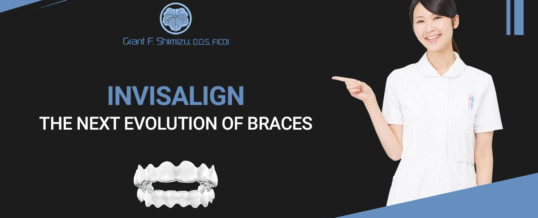
Introduction
Teeth crooked or misaligned are not only unsightly but also challenging to clean. When teeth are not adequately cleaned, periodontal disease can develop. This puts your teeth, as well as your gums and bones, at risk.
Invisalign Braces Treatment is a way to straighten your teeth. On the other hand, traditional braces are ugly, horribly uncomfortable, and can be painful to wear, and adults may feel self-conscious about wearing them. Clear braces, such as Invisalign, are an excellent option.
Braces
Ceramic, tooth-colored braces are similar to regular metal ones, and in the aspect of results obtained, many of us still believe they have a better aesthetic appeal. Clear, tooth-colored, or ceramic braces work exactly as metal braces, using an archwire that runs through brackets attached to the teeth. On the other hand, clear braces have brackets made of a translucent substance that, once attached to the teeth, blends in with the natural color of your teeth, making them practically undetectable.
While clear braces have many advantages, there are a few things that you have to consider before going for them. While the brace is made of stain-resistant material, the transparent rubber bands that wrap around each separate brace are pretty susceptible to staining. So it’s essential to keep discoloration to a minimum by regularly cleaning and flossing and avoiding foods and drinks that stain easily (such as soda, coffee, tea, and tomato-based products).
Because of the tiny difference in substance, clear brace brackets aren’t nearly as strong as their metal counterparts and may be more prone to breaking. Because of this, they avoid particularly hard, crunchy, or sticky foods that will be even more critical while wearing transparent braces. However, because these foods should be avoided throughout traditional braces treatments, the benefits of such a discreet orthodontic therapy usually outweigh the disadvantages.
Braces vs. Invisalign: Treatment Duration
- Treatment times are not constant; they vary based on the patient’s needs. However, Invisalign is frequently a quicker realignment procedure than braces.
- While teeth are being moved into their correct positions with traditional braces, the process can frequently be lengthy and involve specialized fittings and revisions.
- Although some adults also benefit from braces, traditional braces are often introduced at a young age for the most excellent effectiveness.
- On the other hand, Invisalign procedures generally take a year to complete.
Effectiveness of braces vs. Invisalign
Except for eating and sleeping, 20 to 22 hours a day are spent wearing Invisalign aligners. You will receive a new, fresh set of aligners every few weeks as your teeth start to move into their new position.
Due to its unique design, Invisalign can move teeth into their correct positions equally as effective as traditional braces while being far more convenient.
Costs of Invisalign vs. Braces
One of the more expensive options in the case of dental procedures that patients may need is teeth realignment. Insurance frequently assists, but braces can become costly due to the drawn-out process.
Due to treatments being completed more quickly than conventional braces, Invisalign® can
occasionally be a more affordable option. Some of the expenditures may also be covered by insurance.
JUL
2022

